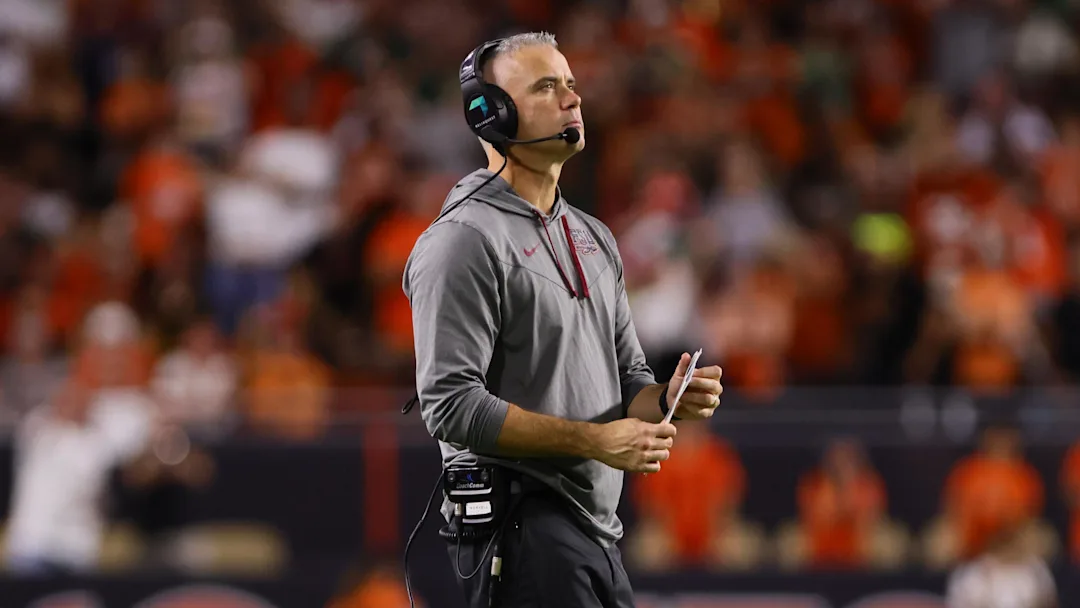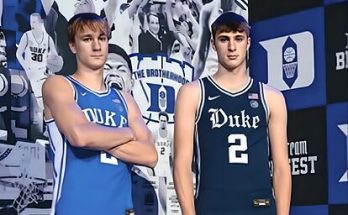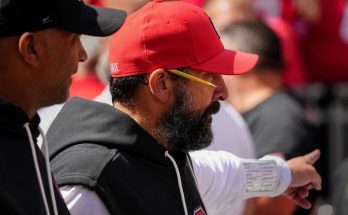In the world of college football recruiting, few things are as significant as the decisions made by top high school players about where they will spend their college careers. Players often receive attention from all across the country, and their commitments can alter the course of a program’s future. Recently, Florida State Football has been monitoring an intriguing situation surrounding one of their top commitments—an elite recruit who has continued to make visits to a program many would consider a rival: the Alabama Crimson Tide. This situation has sparked much debate, as it raises the question of loyalty, recruitment strategies, and the challenges college programs face in trying to maintain their class commitments in an era where recruits have so many options and resources at their disposal.
Recruiting is a key aspect of building and sustaining success in college football. Programs like Alabama, which have a legacy of national championships and a culture of winning, have become known for their ability to pull top recruits from all over the nation. Their storied program, led by head coach Nick Saban, is often the final destination for many elite prospects. Florida State, on the other hand, has a rich history of its own, marked by numerous championships, NFL talent, and passionate fans. When a highly regarded recruit commits to the Seminoles, it is a big deal. However, when that same recruit, even after making a commitment to Florida State, continues to take visits to Alabama, it sends a clear message that the battle for talent is far from over, even after a commitment is made.
The recruit in question is a highly ranked prospect, someone who could be an immediate contributor to whichever program he chooses to play for. His skills on the field are undeniable, and his potential has caught the attention of numerous top-tier programs. This recruit had initially committed to Florida State, and fans were ecstatic to have landed such a valuable player for their future. However, his continued interest in Alabama has caused some tension and speculation. As with most high-profile recruits, the offers don’t stop after a commitment, especially when a program like Alabama is involved.
Commitments are an interesting aspect of the recruitment process. A commitment, especially for a top player, is often considered a verbal promise to a program, but it is not a legally binding contract until the player signs their National Letter of Intent (NLI). In the meantime, recruits are allowed to take official visits to other schools, which often happens when the recruit is unsure about their decision or if they are still being heavily pursued by other programs. In this case, despite his commitment to Florida State, the recruit’s continued visits to Alabama are an indication that he may still have doubts about his decision, or he could simply be keeping his options open.
For Alabama, this is a golden opportunity to try to flip a committed player. Nick Saban and his coaching staff are well-known for their ability to work tirelessly to recruit players, even when they are committed elsewhere. The fact that the recruit continues to take visits to Alabama only strengthens the notion that the Crimson Tide may still have a chance to sway him. It is also important to note that Alabama’s reputation for developing NFL talent and consistently competing for national championships makes it an attractive option for any elite high school player.
From Florida State’s perspective, this situation is both frustrating and a reminder of the competitive nature of recruiting. Florida State has had its fair share of challenges in recent years, with coaching changes, fluctuating team performance, and a lack of consistency on the field. While the Seminoles have a passionate fanbase and a rich history, they have not been as consistently dominant as programs like Alabama. This inconsistency has created an environment where recruits, even those who have already committed, are more likely to entertain offers from other top programs.
Florida State has made strides in recent years under head coach Mike Norvell, and the program has shown promise, but they are still in a period of rebuilding. This has caused some recruiting challenges, especially when it comes to holding on to commitments from highly coveted players. The fact that a top commit is still visiting Alabama suggests that the recruit is evaluating all of his options thoroughly. While some might view this as a betrayal of his commitment, it is important to remember that these players are making decisions that will have long-lasting effects on their futures. They have the right to ensure that they are making the best choice for themselves, both on and off the field.
For recruits, the decision about where to play college football is one of the most significant choices they will ever make. It’s not just about playing time or the chance to win national championships—it’s about developing their skills, preparing for the NFL, and finding a program that fits their needs. Alabama has a proven track record of sending players to the NFL, and many recruits view that as a strong selling point. On the other hand, Florida State also has a history of producing high-quality NFL talent, but they have not been as consistent in recent years. This disparity in success on the field has likely played a role in this particular recruit’s decision to continue exploring other options, even after making a verbal commitment.
As fans and coaches, it can be difficult to accept when a player shows interest in other programs after committing. The notion of loyalty is often brought up in these situations, with some arguing that a commitment should be respected and that recruits should stay true to their word. However, in the world of college football recruiting, things are rarely so simple. Commitments are not contracts, and the reality is that these players are being courted by multiple schools that are all vying for their services. In many ways, it’s not just about loyalty to one program—it’s about making the best choice for their future, and that involves weighing all options, no matter how many times a recruit may have already committed to a school.
The Alabama Crimson Tide, known for their recruiting prowess, have a history of flipping recruits, especially those committed to other programs. It is part of the nature of the game. When a recruit takes a visit to a program like Alabama, it often signals that the coaching staff sees an opportunity to land a big-time player. Even though the recruit has committed to Florida State, his interest in Alabama keeps them in the hunt. Alabama’s staff has likely made it clear that they are still very much interested in him, and that interest can be enticing, particularly when it comes to playing for a team with a history of winning championships



